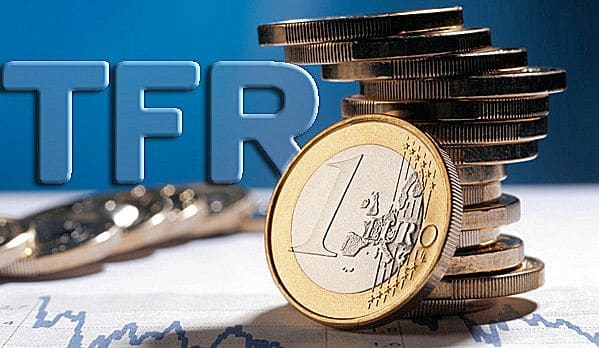
The Severance Indemnity is a social security institution, to guarantee workers, introduced by the
Law 297 of 1982
The text of the aforementioned Law replaced the old article 2120 of the Civil Code.
Severance indemnity is a form of deferred remuneration, paid upon termination of the employee's employment relationship.
LEGAL-NORMATIVE REFERENCES
Law 297/82 regulated in an innovative way the methods and calculation criteria for determining the indemnity due by the employer
Moreover, the Law exclusively provides for the obligation, for companies, of accounting registration of the portions of severance indemnities that accrue annually and of disbursing the sums at the end of the employment relationship.
The severance indemnity is determined by calculating, for each year of service, an amount equal to, and in any case not higher than, the gross salary due for each year, divided by the fixed parameter of 13.5. The share therefore represents 7.41% of the salary (precisely the 6.91% paid to the former employee plus the 0.50% paid to INPS)
This amount is revalued, on a compound basis, as at 31 December of each year, by a percentage consisting of the 1.5% in a fixed amount and the 75% of the increase in the Istat consumer price index.
The elements that contribute to the formation of the severance indemnity are numerous and range from the basic salary to function allowances, generally including all ongoing payments.
The TFR is an allowance reserved for employees in the private sector.
The severance indemnity is an indemnity that escapes ordinary taxation to be included in a separate taxation procedure, expressly elaborated for this type of indemnity and for equivalent indemnities.
Law 297/82 provides for the possibility for the worker to obtain advances (within the limit of 70% of the accrued, except for more favorable agreements). The advance can be obtained only once during the employment relationship provided that the employee has completed at least 8 years of service with the same employer.
The advance request must be justified by the need to:
- any health expenses for therapies or extraordinary interventions recognized by the competent public structures
- purchase of the first home for oneself or for the children, documented by a notarial deed
TAXATION
Legislative Decree 47/2000 modified the taxation on severance indemnities for provisions made starting from 1 January 2001; currently, the situation is as follows:
- quotas + returns before 1.1.2001 taxation Sep.
- quotas post 1.1.2001……………….tax. Sep.
- returns after 1.1.2001..11% per tax period
How is the separate tax calculated?
1) The tax base:
tfrc = (tfr1-309.87 x n1) + (tfr2 – rev01)
tfrc = total tfr
severance pay1 = severance pay accrued as at 12/31/2000
severance pay2 = severance pay accrued on 1.1.2001
n1 = number of years of provision
rev01 = post 2001 financial performance
2) The rate to be applied:
- The tfrc is divided by n1 and the result is multiplied by 12 (months), thus obtaining the RAR (Annual Reference Income).
- The average Irpef rate is calculated on the RAR.
3) Reliquidation
- The tax is reliquidated by the financial offices on the basis of the average tax rate relating to the 5 years preceding that in which the right to receive the severance indemnity accrued.
THE INSURANCE SOLUTION
Even the TFR, like the TFM [Editor's note: end of mandate treatment], can be set aside in various forms or even not set aside except as a pure balance sheet item
An interesting solution is the one offered by taking out a policy as it is the only solution that allows you to have a minimum guaranteed return
What are the advantages of an insurance solution?
- the shares paid remain deductible from business income
- the premiums paid represent a fixed credit to be shown in the balance sheet, guaranteeing the necessary liquidity for sudden exits
provides a guaranteed minimum return - offloads the burden of management onto a third party
- employee loyalty to the company
For optimal management of issues relating to severance pay, the insurance solution should include a collective contract
The 99% of the TFR products existing on the market, are sold collectively.
SUBSCRIPTION TO THE SUPPLEMENTARY SECURITY
- Law 23 August 2004, n. 243
"Regulations on pension matters and delegations to the Government in the public welfare sector, for the support of supplementary pensions and stable employment and for the reorganization of compulsory social security and assistance institutions"
"Conferment of severance indemnity accruing to the supplementary pension" - Development of Complementary Pensions
- Greater tax breaks for FP on contributions: tax deductibility (today: 12%, max 5,164 Eur)
on FP: Substitute Tax (today: 11%)
- Greater tax breaks for FP on contributions: tax deductibility (today: 12%, max 5,164 Eur)
- Total use of severance pay (7.5 billion euros)
- Silence / assent (delegated law 243/04)
- Equality of FPc, FPa, Fip
- De-contribution of the public component in favor of the complementary component
The worker will be able to express himself on the allocation of his severance pay to the supplementary pension scheme and on the instrument to be used (fund or FIP) within 6 months from the date of entry into force of the legislative decree implementing the delegation that is to say, for newly employed workers, within 6 months of hiring.
TFR AND SUPPLEMENTARY SECURITY
WARRANTY
- The worker has full freedom in choosing the fund to which to allocate his own contribution and that of the employer.
- The worker must always be informed about the access conditions and the fund regulations.
- The free portability of contributions between funds is recognised.
PROTECTION OF PERFORMANCE
the services provided by the funds will have the guarantees of non-transferability, non-sequestration and non-attachability
BENEFITS FOR EMPLOYERS
the higher costs deriving from the development of the pension pillar will be offset by equivalent economic benefits (reduction in labor costs, easier access to credit)
NEW TAX INCENTIVES
- extension of the deductibility limits
- reduction of the withholding tax that weighs on the returns of the assets placed by the funds.
THE ADVANTAGES OF THE EMPLOYEE WORKER
- in favor of the members of the contractual funds, "and only for them", the employer is obliged to pay sums of money to the pension fund in the form of a monthly contribution.
- The reform introduces the possibility that, if the worker is entitled to a contribution from the employer to be allocated to the supplementary pension, a right acquired through collective bargaining, this contribution may flow to the pension scheme chosen by the worker himself.
- The contributions paid are deductible from IRPEF income, allowing for tax savings; which in fact reduces the cost of the contributions themselves.
- If at the time of the service, only the annuity is requested, i.e. a share of capital not exceeding 1/3 of the amount, the taxation is more favourable.
- In some conditions (e.g. dismissal due to reduction of personnel) the redemption in the form of capital of the worker is also fiscally facilitated
- The tax deduction will be made directly in the pay slip
- Securing a supplementary pension
- It does not necessarily affect the portion of the liquid salary received on a monthly basis
- The risk of insolvency is reduced if the severance pay is delivered to entities subject to strict management rules and strict supervision
- Free choice of the fund most pleasing to the worker
THE RULES AFTER THE severance indemnity reform
workers already enrolled in the supplementary pension scheme
- Anyone who pays the entire severance indemnity will continue to pay in full
- Anyone who partially pays the severance pay (potentially a worker already registered after 28.04.93, but who had started working before that date) should transfer the severance pay in full - but it is not said that in this case, the implementing decree can establish a different will of the worker.
workers not enrolled in the supplementary pension scheme
- They can communicate that they do not adhere to a supplementary pension and decide to keep the severance indemnity in the company (time 6 months)
- They can choose the fund to which the severance indemnities and any contributions will be allocated (time frame 6 months)
- If they do not make any choice, the severance indemnity will be tacitly transferred to a regional fund or (on the basis of collective agreements) failing that, to a supplementary fund set up at a compulsory social security institution.
____________________________________________________________
Ed.: From 1 January 2007 all employees in the private sector must, within six months of the date of hiring, explicitly demonstrate their willingness to confer or not the severance indemnity accruing to the complementary pension. During the aforementioned six-month period, the employee can decide whether to devolve his severance indemnity accruing to a supplementary pension scheme or whether to keep it in the company. The application of this mechanism requires the company to play an important role in providing preventive information to its employees. The employer will have to deliver the form (TFR1 models And TFR2) prepared by the Ministry of Labor and Social Security to be used for exercising the choice.
Near the expiry of the semester, the employer will have to provide workers who have not yet expressed any will regarding the conferral of their accruing severance indemnities, appropriate information in relation to the supplementary pension scheme towards which the employee's accruing severance indemnities will automatically be allocated .
See also:
INPS. TFR-Miscellaneous Credits-Complementary Pension
Choice of severance pay: Inps or pension funds? [The sun24 HOURS]





